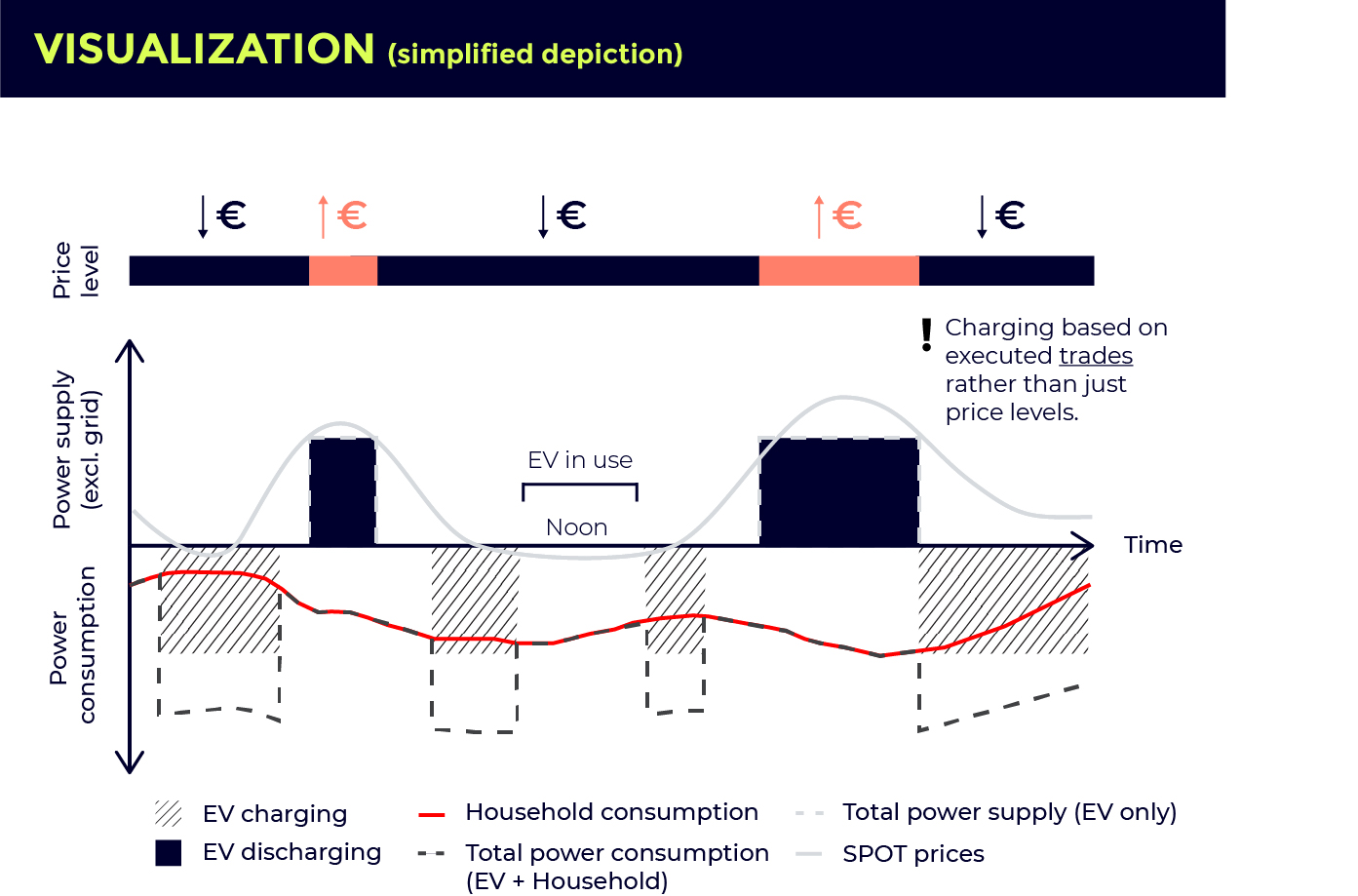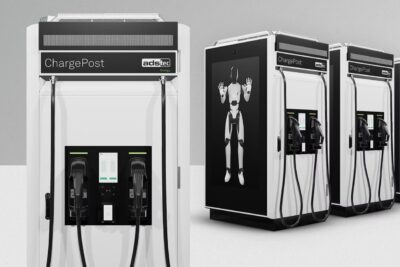The benefits and challenges of bidirectional charging
In its recently published white paper, P3 devotes 24 pages to the various use cases for feeding electricity back from car batteries. The title: ‘Bidirectional Charging – Worth the Hype? – Exploring Use Cases from Vehicle-to-Home to Vehicle-to-Grid.’ As P3 emphasises in its analysis, several factors are driving the development and introduction of bidirectional charging.
Several factors are propelling the development and deployment of bidirectional charging, as P3 emphasises in its analysis. First and foremost is the increasing penetration of renewable energy sources. Wind and solar power, being inherently intermittent, require flexible storage solutions. EVs equipped with bidirectional capabilities offer a distributed, scalable means of energy balancing.
Another driving factor is the push for grid resilience. Traditional energy grids are facing mounting pressure due to rising electricity demand and climate-related disruptions. As the document notes: “Leveraging EV batteries for grid support can alleviate stress on transmission infrastructure and reduce dependency on fossil-fuel-based peaker plants.”
Furthermore, bidirectional charging presents economic advantages for EV owners. By feeding power back into the grid during peak periods, drivers can generate additional income, offsetting charging costs and improving the total cost of ownership.
Challenges remain
Despite its promise, bidirectional charging is not without challenges. One key technical hurdle lies in battery degradation. Frequent cycling of charge and discharge affects battery longevity, though ongoing advancements in battery chemistry and smart charging algorithms are mitigating these concerns. P3 states. “Smart charging strategies, combined with AI-driven energy management, can optimise bidirectional energy flow while minimising battery wear.”
Interoperability is another crucial consideration. For bidirectional charging to scale effectively, standardised communication protocols between vehicles, chargers, and grid operators must be established. Industry initiatives such as ISO 15118 and CHAdeMO are making progress in this direction.
Additionally, regulatory and market frameworks need refinement. At present, energy market structures do not universally support bidirectional energy transactions. As the document highlights: “Clear regulatory frameworks and market incentives will be vital in unlocking the full potential of bidirectional charging.”
In more detail: use cases explained
One important side note: authors Markus Hackmann, Lea von Guttenberg, and Bendiks Herbold point out that this guide was developed from a German market perspective and focuses on passenger vehicles. According to the document, “bidirectional charging has the potential to transform EVs into mobile energy storage units, unlocking substantial value across the energy ecosystem.”
To help people ‘navigate’ the complexities of bidirectional charging, the document includes eight so-called one-pagers, looking at the different applications. Most of these are vehicle-to-home applications, for example, using bidirectional charging to optimise energy consumption, ‘of self-generated photovoltaic (PV) electricity.’ P3 outlines the technical, regulatory and economic aspects of each application, and provides an assessment of the ‘maturity’ of the latter.

For example, P3 considers the regulatory framework for vehicle-to-home applications as very mature, while there is room for improving the technology and economic benefits.
When it comes to vehicle-to-grid applications, all three aspects are still at the beginning. P3 explains the use cases ‘Arbitrage (in-front-of-the-meter),’ where ‘charging and discharging processes are managed based on active trades on wholesale electricity markets,’ and ‘frequency services.’ In the case of the latter, “a fixed proportion of the electric vehicle’s battery capacity is ‘leased’ to an energy service provider for system service,” P3 explains.
Let’s first look at the former. The authors point out that “as market prices fluctuate due to the increasing share of volatile renewables, [arbitrage] strategy offers significant revenue potential.” Moreover, the household’s energy consumption remains unaffected. To realise this strategy, the home needs to be equipped with a smart meter and an aggregator is needed. In terms of technical maturity, P3 gives this application two out of three points.

The main issue is economics, as in Germany there is double taxation on energy storage systems. Energy is taxed when fed into the grid and when taken out of it. Moreover, there are grid fees and metering costs associated with this use case. Nevertheless, P3 sees the potential for new business models, such as “new(smart) energy tariffs to share trading revenues with the EV owner.”
The use case ‘Frequency’ is even further away from mass-market potential. For one, 200,000 EVs would be sufficient to regulate the grid in Germany. And “the additional financial burden of taxes, levies and surcharges on electricity temporarily stored in bidirectional EVs further decrease the use case’s economic attractiveness.”

In the future, the list of use cases will be expanded by ‘Other Ancillillary Services.’ However, at this point, there is no regulation and no clear economic benefits.
The Road Ahead: Scaling Bidirectional Charging
To fully realise the potential of bidirectional charging, P3 suggest that several key steps must be taken.
- Investment in Charging Infrastructure: Expanding the network of bidirectional chargers will be essential for widespread adoption. Governments and private enterprises must collaborate to fund infrastructure deployment.
- Regulatory and Market Reforms: Policymakers should establish frameworks that incentivise V2G participation, including dynamic pricing models and remuneration schemes.
- Technological Innovation: Continued advancements in battery performance, smart charging software, and grid integration technologies will be critical in optimising efficiency and reliability.
- Consumer Awareness and Engagement: Educating EV owners on the economic and environmental benefits of bidirectional charging will drive participation in energy markets.
Industry developments and real-world implementations
Leading automakers and technology firms are already pioneering bidirectional charging solutions. Nissan’s Leaf, for instance, has long supported V2G and V2H applications. European projects such as EV4EU and the UK’s Electric Nation trial aimed to demonstrate real-world benefits of bidirectional energy exchange, as is a carsharing project in the Netherlands. And let’s not forget: The Mobility House is currently testing vehicle-to-grid in France together with Renault, using the all-electric Renault 5.
The document underscores the importance of these initiatives: “Large-scale trials and pilot projects will be instrumental in validating business models and technological feasibility.”
According to the authors, bidirectional charging represents a paradigm shift in the way we view electric vehicles—not just as transport solutions but as integral components of a flexible, decarbonised energy grid. While challenges remain, ongoing industry collaboration, policy evolution, and technological progress are setting the stage for a new era in energy resilience and sustainability. As the document concludes: “Bidirectional charging will play a defining role in the electrification of mobility and the energy transition, creating synergies between transport and power sectors.”
Information per e-mail; p3-group.com





0 Comments